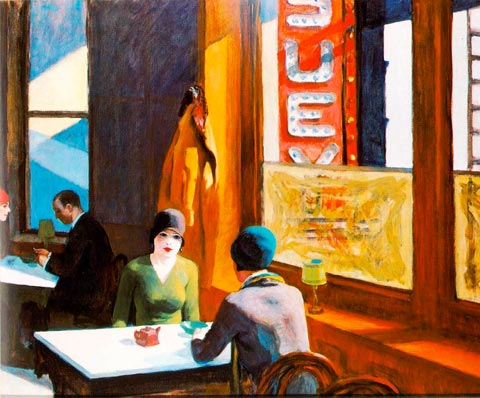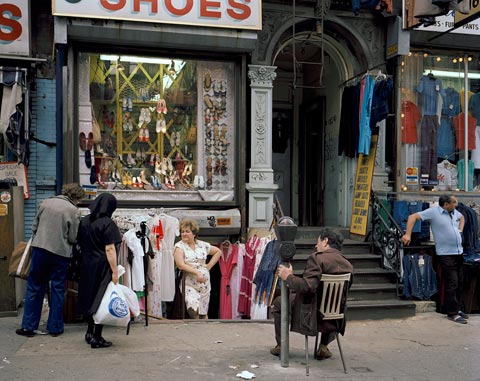New York/Walking the Beat

Times Square (4x5 film), late '90s
I've been reading Adam Gopnik's most recent collection of essays, some previously published in the New Yorker, Through the Children's Gate. After returning from two years in Paris, he rediscovers New York, especially as seen through his children's eyes. In one essay he finds himself on school safety patrol and in the process sees the block he's assigned to in a totally different way--a much slowed down more richly detailed place.
It's an experience I'm familiar with moving randomly down the street with my view camera sometimes taking several hours just going a handful of blocks. One becomes aware of a countless small things that are invisible when flowing with the crowd in the street or whizzing by in a taxi or bus. As Gopnik writes: "Density reveals itself as a particular pattern of parts: this odd little auction house, and this garage entrance beside it, and the two rival rental-car offices anchored by the garage, and the tailors down the stairs into this basement, and the Chinese restaurant that no one ever seems to enter or order from two doors away."
In the slowed down world seen by few--the cop on the beat, the mailman, the photographer--the city seems suspended, still, the rushing pace of everything else blurs by and one becomes aware of a face, a figure, a buzzing neon light, the denizens of the block, the intimate moments held within the great rushing of sight and sound. Something, it would seem, is about to happen, a latent meaning suggests itself, then vanishes.

Chop Suey, Edward Hopper, 1929
Gopnik: "On one street, a thousand small efforts at making a living, none seeming obviously to thrive; all, in fact, to a single policeman's passing eye, as empty and soulful as a Hopper afternoon interior, and yet it works. Somehow it thrives. (What Hooper was showing, it occurred to me, was not the desolation but the energy of American life: This is what capitalist city looks like most of the time, half asleep and waiting.)"
It's always a question, what is it I am up to out there with my camera? When I was a student shooting 35mm slides I alternately went with the flow of the street and fought against it until I tied myself in knots with the exercise. It was color on color, pattern on pattern, light and dark, gesture juxtaposed against gesture, people in motion, everything stretched to the limit across the frame of the camera. I look back and there's an exhilaration in it all, but I can also see where I had to stop, regroup, and think about why. It was then that I began working with the view camera. I had to slow down.

Orchard Street (Fausty/Rose 4x5 film) 1980
Gopnik: "That tone cops have--that steady wariness, even if you ask them for something simple and innocent, directions or advice--is the product of their experience. There really are sinister jigsaw-puzzle patterns out there, and you may be one of the pieces. This is why cops, so to speak, examine your edges even as they answer your entreaties."
To me as a photographer it's also about examining the edges, taking nothing at face value, recognizing the patterns, and walking the beat.

0 Comments:
Post a Comment
Links to this post:
Create a Link
<< Home